A Potential Solution for Lethal Debris Fencing
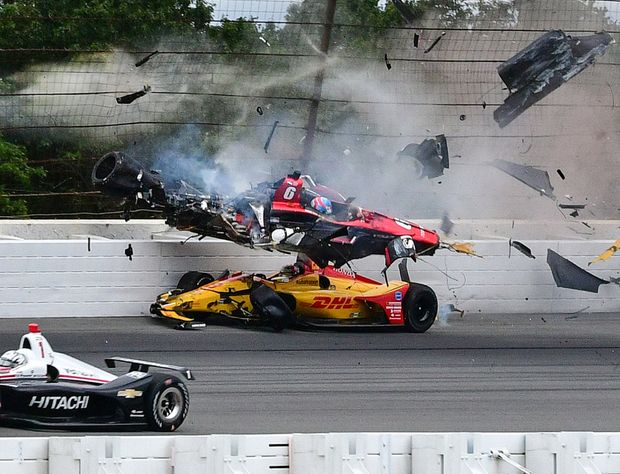 |
| Is there a potential replacement for dangerous debris fencing? |
In late October, sad – although not surprising – news broke that Indy car driver Robert Wickens is paralyzed from the waist down. The talented Canadian, of course, suffered this injury and others in a horrific crash during August’s ABC Supply 500 at Pocono Raceway. After making contact with Ryan Hunter-Reay entering turn 2, the No. 6 Lucas Oil/SPM Honda became airborne, hitting the debris fence nose first.
Sadly, Wickens is not the only IndyCar driver to have gotten into debris fencing in recent years. Mike Conway, Dario Franchitti and Mikhail Aleshin all sustained injuries that sidelined them for an extended period of time, with Franchitti being forced into early retirement. Dan Wheldon, of course, was not as fortunate, as the two-time Indianapolis 500 winner succumbed to injuries suffered at the 2011 season-finale at Las Vegas Motor Speedway.
Wickens’ crash and subsequent injuries have reignited the discussion of debris fencing begging the question: is there a possible solution to dangerous debris fencing for modern Indy cars?
Let me be clear before moving ahead that this is an incredibly complicated matter which one column cannot fully tackle. Also, I outlined some very broad premises in my Pocono Postscript following Wickens’ accident in August about the subject of debris fencing. Amongst these premises, I noted the financial constraints of any potential changes given the current landscape of motorsport generally and Indy Car racing specifically.
I also made clear that the first goal of debris fencing is to protect spectators and keep race cars and debris on the racing side of the fence, both of which, it must be said, did occur in the Wickens crash. Sadly, however much of the burden of impact in these type of systems has been transferred to the drivers.
I don’t want to spend this entire article rehashing those subjects, but should you need a reference, the link is above. The major takeaway is that this is not simply a matter of tearing down one structure and putting up a better one.
There have also been numerous proposals since Wickens’ crash, amongst them, the laminated plexiglass or laminated polycarbonate concept AR1 president Mark Cipolloni has championed for nearly a decade. What follows is not meant to dispute Mark’s idea or others like it, nor is it to advocate for one concept over the other. Furthermore, there are auxiliary matters related to the overall safety discussion such as IndyCar adopting the Formula 1 halo concept that further complicate the discussion.
My intention therefore will be to offer a concept not previously suggested that I believe at the very least offers conceptual merit, in the hope of continuing to move the discussion forward.
To begin, I think it is necessary to establish some understanding of the systems currently in place. While there are some small variations to this, for our purposes there are three basic types of debris fencing on the market, so to speak.
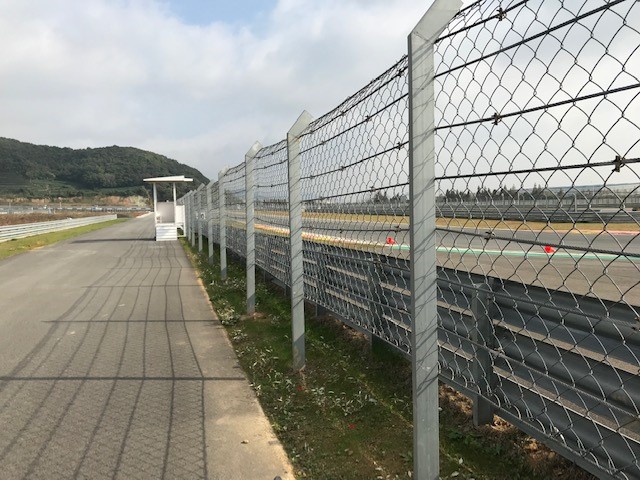 |
| Standard FIA fence |
The first, which I’ll refer to as the FIA model, is seen worldwide at nearly all modern FIA approved road tracks; the second system, which I’ll refer to as the American system, is common place at oval tracks and erected with NASCAR in mind.
A third system would be a design seen at many street circuits, which takes into account the ease of set up down and taken for temporary circuit events. However, the primary focus of this article will be to look at an adequate system for permanent racing facilities, and the street course model therefore is not really pertinent to our discussion.
Another thing to get out of the way before moving ahead is the difference between debris and catch fencing. Debris fencing is intended to keep debris or cars on the racing side of the fence. A catch fence on the other hand is meant to literally catch or in some way retard the speed of a car headed for its final barrier.
If you think that’s two different ways of saying the same thing, you would be wrong. What we call debris fencing nowadays seeks to keep cars or debris inside the racing area with the goal catching a car or dissipating it’s speed really not much, if any, of a consideration. The result of this is that while debris fencing has shown to be mostly effective in keeping debris outside of spectator areas, the force of the impact has in large part been transferred to the driver.
We'll address why exactly the concept of debris fencing won out over catch fencing decades ago. For now, lets get back to the systems in place, starting with the FIA system. The key points about the FIA system would be as follows.
- That the debris fencing be erected a minimum of 2.5 m above the ground with heavy steel 120 mm double-U iron posts. These posts are set apart at 4 m intervals, 1 m behind the barrier (usually a guardrail).
- a 200 cm high overhang at 45 degrees facing the track
- 12 mm steel cables installed parallel to the ground at 25 cm distances apart. These cables must be bolted to the front of the upright posts
- a steel mesh fence is then bolted between the cables and the posts.
As for the American system commonplace at ovals, some of the specifications include…
- Tall circular posts set 12 ft. apart, usually bending towards the track as to be 90 degrees with the track banking.
- Horizontal steel cables bolted to the front of the mesh fencing, which is in front of the posts.
- The fences are either bolted to, or erected on top of, the concrete barriers surrounding the track.
- Unlike the FIA design the posts are not encased in concrete, rather dropped into sleeves in the top of the concrete barriers. This provides a degree of retardation upon impact (more on this later).
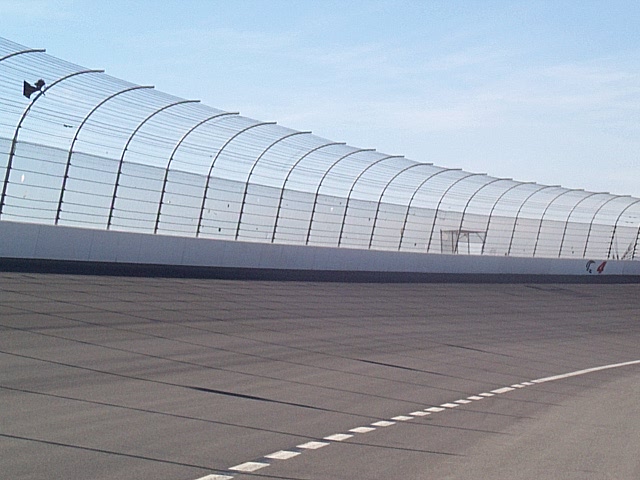 |
| An example of debris fencing at many American oval tracks |
Over time, the FIA model has been very reliable in terms of preventing cars and debris from penetrating the barrier and endangering spectators. However, there are still drawbacks to this model for us to consider.
For one, the poles being so close together, means the view of spectators standing close to the track is significantly compromised. Also, the fence is very difficult and costly to repair during a race should it get damaged.
However, worst of all is that the fence is, as longtime race track designer Alan Wilson says “nothing more than a see-through solid wall." While, the FIA model has shown itself incredibly proficient at protecting spectators from flying cars and debris, that strength is also a weakness, as the incredibly rigid, inflexible design of the posts means the burden of impact is largely shifted to the driver. Furthermore, the very narrow gap between vertical poles means the potential pocket to slow cars down is significantly reduced.
This is one area where Wilson believes the American system to be more effective, but still greatly lacking as we saw in the Wickens crash. Remember, the American system has tensioned longitudinal cables, more flexible fence posts than the FIA model, and greater distance between fence posts. The result of this is at least some degree of retardation upon impact for the driver, along with a system that is effective (mostly) at keeping debris on the racing side of the fence.
However, this is where we must make a distinction between boxy, heavy stock cars, and lighter angular Indy cars.
The American system with its relatively large holes has over time done an adequate job of absorbing the impacts from boxy stock cars. In recent seasons, Austin Dillon, Carl Edwards, Brad Keselowski and others have impacted debris fences and incurring only minor injuries if incurring any at all. To illustrate this, think of throwing a heavy box at the fence with a driver in the middle of the box with a certain degree of cushioning. Because the box has a large surface area, the effect of the impact is diffused over a wide area providing a greater degree of protection for the driver.
Angular Indy cars on the other hand provide no such luxury. Rather than say a box hitting the fence, think now of an IndyCar driver on a bicycle hitting the fence. I concede this is not a perfect comparison, but the illustration has merit. The small surface area of the bicycle would mean that the energy of the impact has an incredibly small surface area to dissipate, meaning much of the burden is shifted to the driver. Furthermore, an angular Indy car has a significant possibility of lodging into the fence, helicoptering, and incurring multiple impacts as we saw with Wickens. Combine the lack of protection for the driver, the car pirouetting and the possibility of hitting fence poles and you can see the potentially disastrous consequences of Indy cars getting into debris fences.
So, we all agree that something needs to be done about Indy cars getting into catch fences. The question is, what?
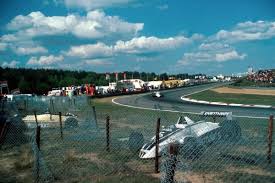 |
| Catch fencing |
Well, if we go back to the 1970s and early 1980s, there was a system in place at numerous road courses known as catch fencing (I’m not suggesting this, hear me out). These catch fences were four 4 ft. high chain link fences attached to wooden posts that were held in place by sleeves concreted into the ground.
Fundamental to this design was that the wooden posts holding the fencing together were designed to come apart allowing the chain link to catch the cars without the posts creating a rigid impact.
This system worked incredibly well in slowing down cars and preventing them from hitting guardrails beyond the catch fence at high speeds. However, the brilliance of the system also proved to be its fatal flaw.
The wooden posts coming apart provided great retardation for impact and the chain link kept drivers from hitting guardrails. Unfortunately, the wooden posts had to go somewhere after coming apart and often that somewhere meant projectiles flying at drivers and in some cases killing them.
Consequently, catch fences were removed, and have mostly been relegated to a forgotten relic on the ash heap of racing history. Still, it should be noted that from the perspective of slowing cars down and retarding their potential impact, these systems worked; quite well, in fact. Furthermore, is there something we can learn from them and apply now?
Wilson believes there is.
The longtime track designer’s proposed system essentially takes the impact reduction of the catch fence and combines it with the strength of the debris fence system. Wilson also believes the system is relatively low cost and could be implemented without totally overhauling the current systems in place.
Here goes….
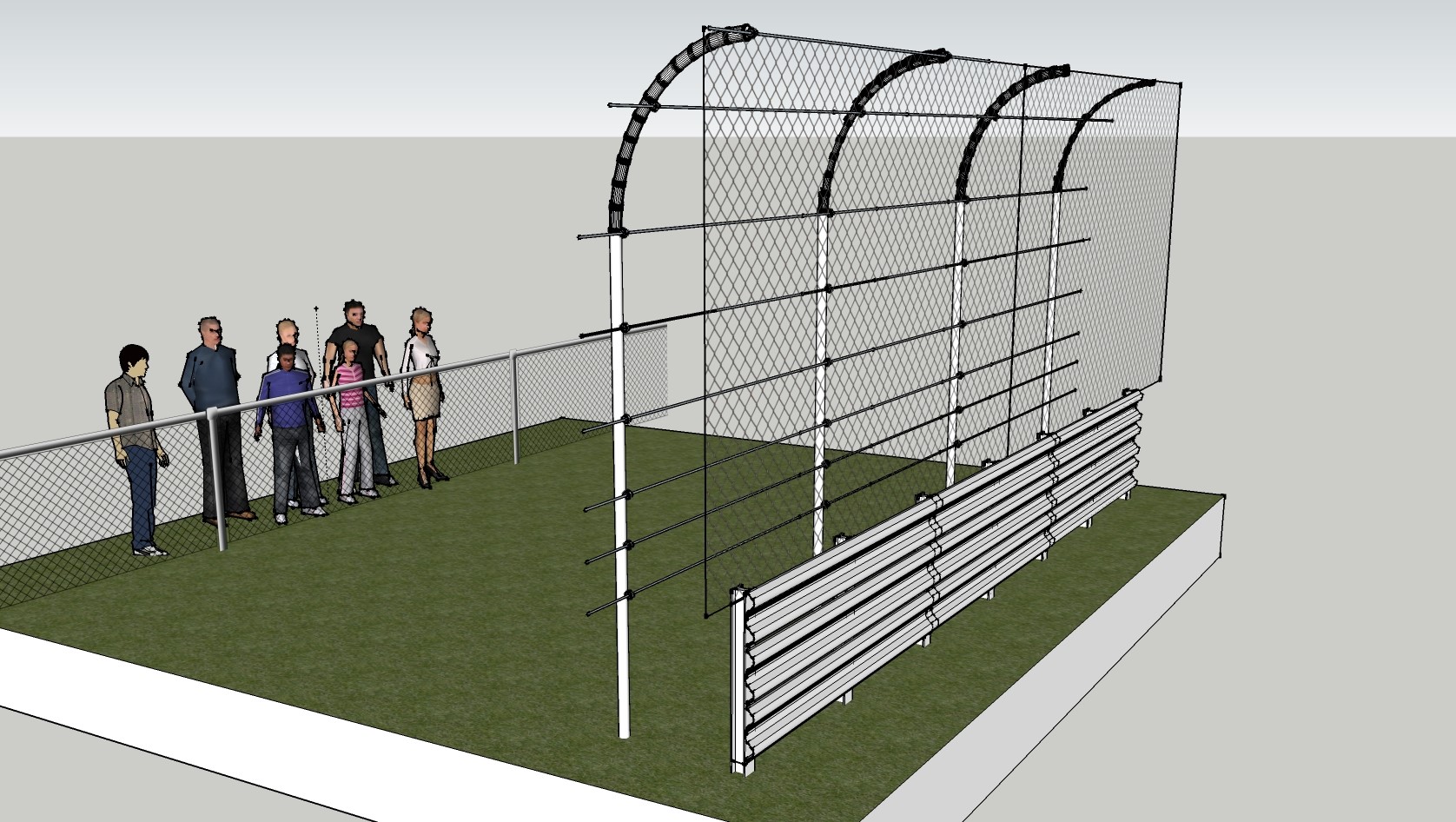 |
| A working model of Alan Wilson's design. In the rendering, the guiderail would really be the face of the Safer Barrier. While the fence meshing looks flimsy in the rendering, in fact it would be a very high strength Geobrugge mesh |
Take the American system with its tall, tensioned posts and horizontal cables as they are but remove the debris fencing. In front of the posts and even with concrete barrier goes a mesh blanket that is fastened by the posts at the top (on the curved part of the fence poles) and bottom (concrete barrier) by a series of cables and clamps. Keep in mind, that Wilson’s blanket is fastened at both the top and bottom of the fence giving it greater strength to hold impacts.
As for the mesh blanket, it essentially becomes a catch fence, dissipating the energy of an airborne car.
And what about those lethal fence poles?
Wilson’s design takes structures that are currently a great liability and turns them into an asset. As you can see from the photo, the poles sit about a meter behind the mesh blanket, connected by tensioned horizontal, steel cabling enhancing the system’s ability to work as one unit. When a car strikes the blanket at any angle it is cushioned by the mesh and caught in a pocket before it ever reaches the poles. In essence, the poles don’t compromise the potential pocket and impact reduction as we see with current debris fencing; nor do they pose danger to the driver who might impact them. Instead, they provide the backbone of the fencing and help create a pocket to dissipate speed; and most importantly the taller poles linked together with longitudinal cables channel the impact energy over a larger area.
Wilson also notes that to be suitable for modern Indy cars, the mesh fencing must have very small squares to prevent the car from helicoptering as we have often seen.
Essentially, Wilson’s design has taken the impact reduction capabilities of the 1970s catch fence and removed the lethal flying posts. Furthermore, this new design also has the strength and integrity of the debris fence minus the minuscule impact absorption.
Wilson acknowledges there may be other benefits to his design, such as relative low cost (it could be erected without any major changes to existing structures) and ease of repair in the case of an accident.
So, can it work?
No one can say for sure without proper testing, something Wilson himself acknowledges. We all know testing costs money, and I'm always hesitant to spend other people's money.
That said, conceptually, the fence offers a solution with relative low cost, as it can take advantage of existing structures in place. It also removes the lethal fence poles, while simultaneously offering the potential impact retardation of catch fencing. Those criteria undoubtedly give the concept merit, and should at the very least, provide some food for thought for the racing industry.
Brian Carroccio is a senior columnist for AutoRacing1. He can be contacted at BrianC@AutoRacing1.com.
